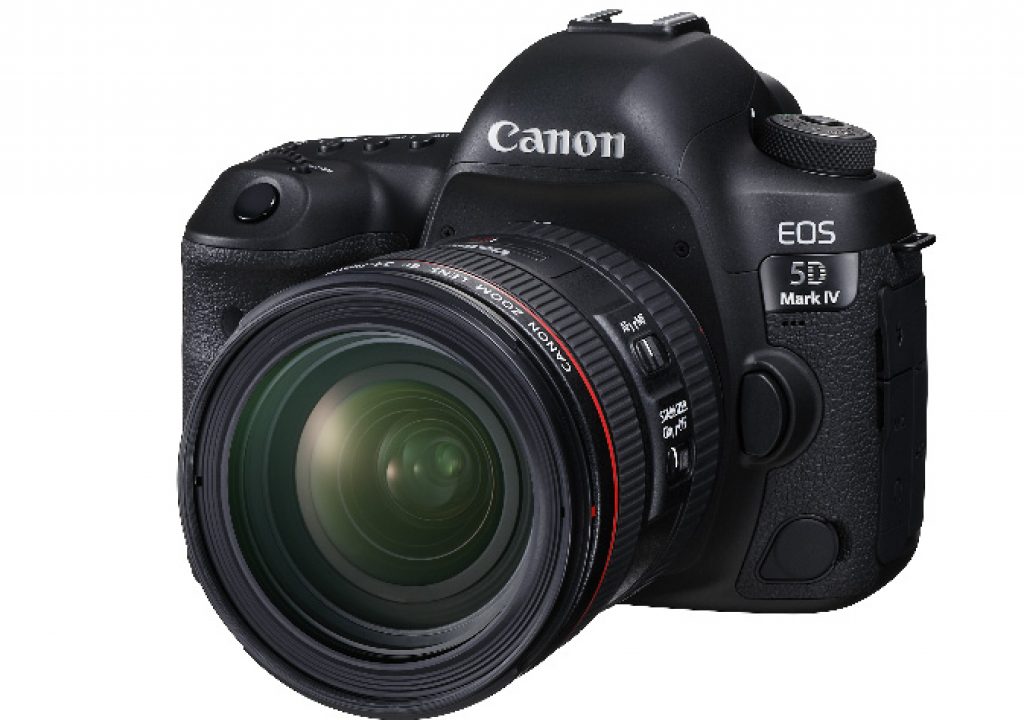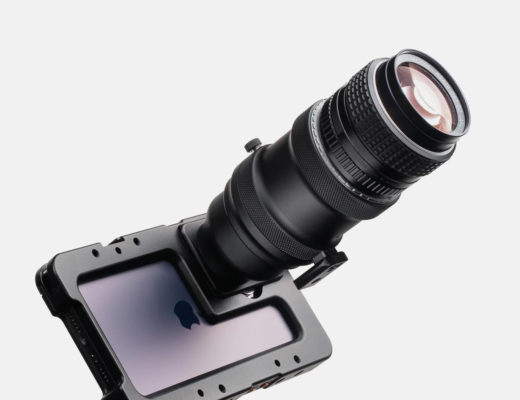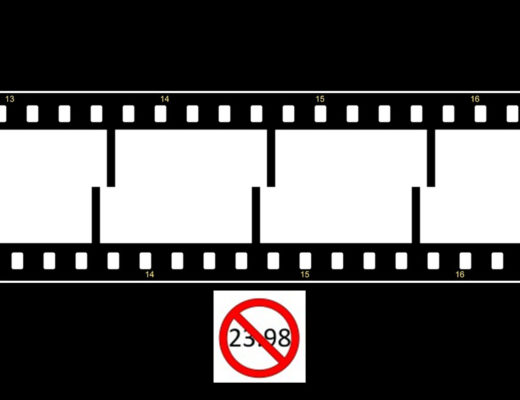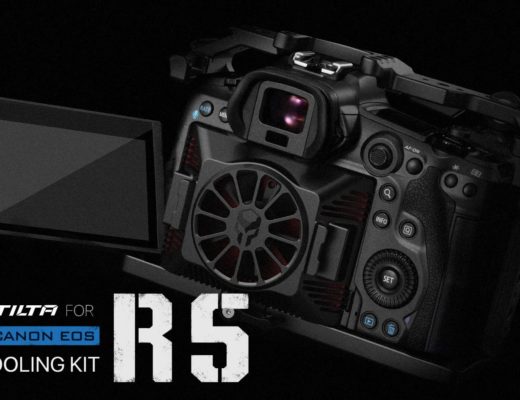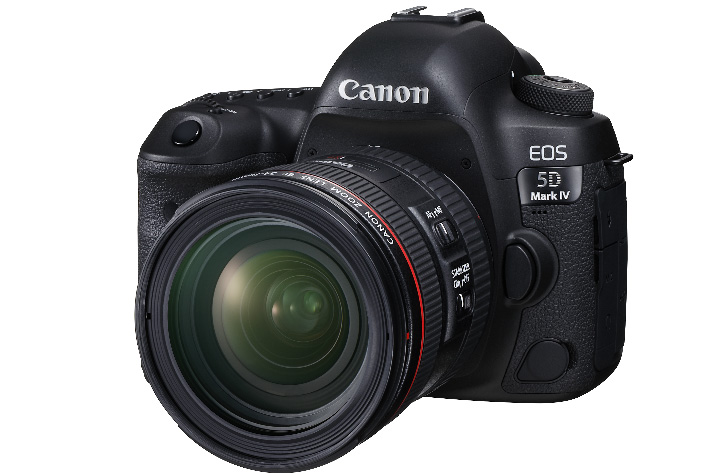
The EOS 5D Mark IV, presented as the tool for photographers in pursuit of the perfect shot offers a 30.4 megapixel sensor with wide exposure latitude, 7 fps, built-in Wi-Fi and GPS and comes with two new lenses, EF 16-35mm f/2.8L III USM and EF 24-105mm f/4L IS II USM.
While many continue to say that Canon created the video DSLR by accident, the truth is that a closer look at the white-paper for the EOS 5D Mark II, from September 2008, reveals something else. Canon’s engineers knew exactly what they were designing and the type of clients they wanted to satisfy with that model.
On the white-paper available for the EOS 5D Mark II (which shares somes pages with the EOS 50D launched at the same time) Canon writes, under the Features and Benefits section, that “The EOS 5D Mark II’s Full High Definition (HD) video recording and playback functionality is creating a paradigm shift in the way still photographers and videographers approach their craft. In the past, one camera or camcorder couldn’t do it all, so advanced and professional photographers rarely thought outside of the still-picture box—and into the fluid motion world of video with sound. But as the thirst for video on the Internet expands and as news organizations tighten their budgets, it will be more cost effective to send one EOS 5D Mark II equipped photographer to an event or wedding instead of a still photographer and movie crew, or a single wedding photographer to capture the important moments in both formats, thus giving owners of the EOS 5D Mark II a distinct competitive advantage.”
The words written then are still valid today. In Canon’s documentation for the launch of the EOS 5D Mark IV the company says that “renowned for enabling people to tell the stories that need to be told, the EOS 5D series has captured many of the world’s most significant moments in history. As successor to the EOS 5D Mark III, the camera has been designed using first-hand feedback from the photographic community to create the most versatile EOS model yet.”
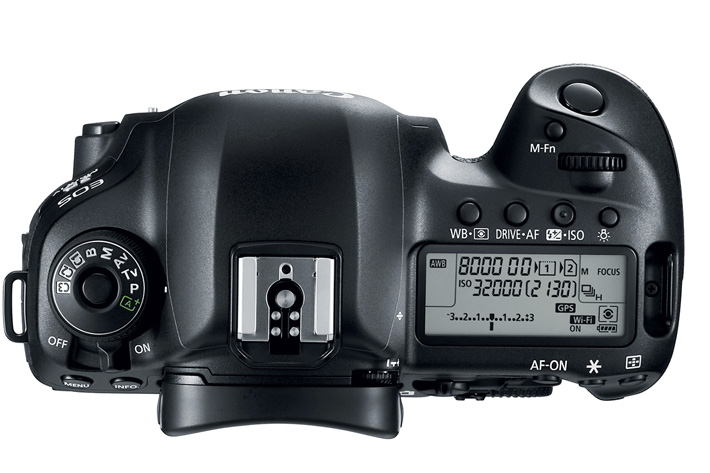
The new camera may not be the revolutionary model some were expecting or urging Canon to deliver, but it is, apparently, a logic progression for the regular users of Canon’s legendary EOS 5D family. Featuring a 30.4 megapixel CMOS sensor with wide exposure latitude, 7 frames per second (fps) high speed shooting, internal 4K movie recording and built-in Wi-Fi and GPS, the camera fuses speed and resolution with excellent low light capability and movie functionality. The EOS 5D Mark IV is also the first EOS camera to premiere the innovative Dual Pixel RAW file format, allowing photographers to fine-tune images in post-production by adjusting or correcting the point of sharpness, shifting the foreground bokeh or reducing image ghosting.
So, besides having Dual Pixel CMOS AF, which grants it extra speed in video capture and stills, the camera introduces a new technology around the Dual Pixel name. This time for something completely different. Each of the EOS 5D Mark IV’s 30 million pixels is made up of two photodiodes which can be used together or individually. This technology enables the creation of Dual Pixel RAW files which contain a pair of images shot from two very slightly different points of view. When processed using Digital Photo Professional software, Dual Pixel RAW files allow photographers to perform one of three types of unique adjustments. Image Microadjustment allows the position of maximum sharpness to be adjusted which is great for fine-tuning portrait images. Bokeh Shift allows out-of-focus highlights to be shifted horizontally so they coincide better with in-focus elements, and ghosting reduction can be used to reduce the appearance of artefacts like flare.
To fully explore the Dual Pixel RAW it is necessary to use the software provided, free, by Canon, Digital Photo Professional. With the launch of the EOS 5D Mark IV Canon introduces another change. Digital Lens Optimizer technology, which was previously only accessible when processing RAW files in the camera, can now be applied to JPEG files as they are captured. The Digital Lens Optimizer uses optical design values to correct various lens aberrations, diffraction, and the softening of resolution caused by the low-pass filter.
When it comes to detail, the EOS 5D Mark IV’s brand new full frame 30.4 megapixel CMOS sensor, delivers “images that are packed with detail, even in the brightest highlights and darkest shadows.” ISO range is as usual, from 100 to 32000, with the option to expand it from 50 to 102400, allowing users to work in an array of lighting environments. Canon indicates that the “enhanced noise processing algorithm further improves low light shooting, ideal for photojournalists who need to capture breaking stories no matter what lighting conditions they face.”
Autofocus appears associated to a 61-point wide area reticular AF system. The 61-points / 41 cross-type AF points cover an expanded sensor area and provide the ability to focus even under moonlight at EV -3 in viewfinder shooting mode, or EV -4 in Live View mode. Tracking faces and colour of fast moving subjects is easy with the EOS 5D Mark IV, says Canon, and the camera enables photographers to use extenders with all telephoto lenses for f/8 AF with all 61 points, including 21 cross type for even greater precision.
Furthermore, the high resolution 3.2-inch LCD with full touch panel operation across all menus is combined with a new AF ‘Area Selection’ button providing quick AF point selection. Additionally, the camera features an advanced 150K RGB+IR metering sensor with a dedicated DIGIC 6 processor for accurate exposures and precise subject detection and tracking.
Designed to respond in an instant and never miss a shot, the EOS 5D Mark IV’s high-speed readout technologies and DIGIC 6+ processor mean you can shoot at 7 fps at full resolution, with full AF / AE tracking. Capturing up to 21 RAW images or unlimited JPEGs in a single burst, you’ll always be ready for the next frame. For when discretion is needed – such as capturing breaking news or animals in their natural habitat – the camera features ‘silent high’, ‘silent low’ and ‘silent single’ modes, offering shooting with minimal noise.
Video is an area where many say Canon is lagging behind he competition with their DSLRs. One has to go back to the white-paper for the EOS 5D Mark II to understand what Canon tried to achieve with the camera, a philosophy that is still present in the newer models of the family. For photographers the reasoning behind the EOS 5D Mark II was explained above. For video, Canon defined at the time its aim with that model. Canon’s engineers wrote then that “on the other hand, serious videographers rarely use their camcorders to capture still images—even though most modern camcorders have the ability. The reason? The average still frame taken by a camcorder (even an expensive 3-chip, HDTV model) is under 5.0-megapixels and may include image quality problems that show up in print. Unlike these camcorders, the 21.1-megapixel EOS 5D Mark II can capture extraordinary quality still images for print clients and even expand the creative possibilities when recording HD video clips. It’s lighter, smaller, and lower-priced than most professional HD camcorders, yet provides amazing depth-of-field control, exposure compensation and white balance controls, and full compatibility with Canon’s super-telephoto, macro, fisheye, tilt-shift, soft focus, and image stabilized EF lenses.”
Canon defined, at the time, the exact clients and segments of the industry for the then revolutionary camera: wedding photographers, photojournalists, fashion and runway, underwater photographers, nature, law enforcement. They knew the market was opening for more than the still photographs and that with reduced budgets a single shooter able to do both photography and video would appreciate a camera like the EOS 5D Mark II. That was the reasoning behind the development of the EOS 5D Mark II. Or, now the EOS 5D Mark IV, which takes the video options further and offers 4K as the EOS-1D X Mark II at a more attractive price.
With the EOS 5D Mark IV, 4K movie-making is open to anyone who wants to use the power of video to tell the bigger picture. A truly versatile camera, it features DCI 4K (4096 x 2160) at 30/25/24 fps shooting and provides the ability to extract 8.8MP JPEG images from 4K videos, making it a great companion for those wanting to easily switch from video to stills. Delivering quality footage has never been more important with streaming services increasingly demanding content be shot using the latest technology in the field. The EOS 5D Mark IV brings this advancement in the form of a video DSLR with internal 4K, 120p HD, Dual Pixel CMOS AF, time lapse movie and new HDR movie mode. It may not be revolutionary, but it will, probably, be enough for a lot of professional users.
Canon says the camera is packed with a range of new and refined features requested by Canon’s professional community: built-in Wi-Fi enables remote operation and secure file transfer (FTPS/FTP) via smart devices using the Canon Camera Connect app, and NFC provides instant connections between compatible devices. GPS geotags each image in the EXIF data with automatic time updates helping to manage images and, for the first time, IPTC metadata, such as details of a shoot, is automatically embedded.
IPTC (International Press and Tele Communication) is a standard for recording information within images. The EOS 5D Mark IV allows an IPTC template, created in popular software such as Photo Mechanic or EOS Utility, to be loaded to the camera. The IPTC data is then automatically embedded in the image as it is taken as an XMP file, meaning it can be read by all modern photo editing software. This is extremely important for fast paced industries such as news or sports as it saves time adding this data later.
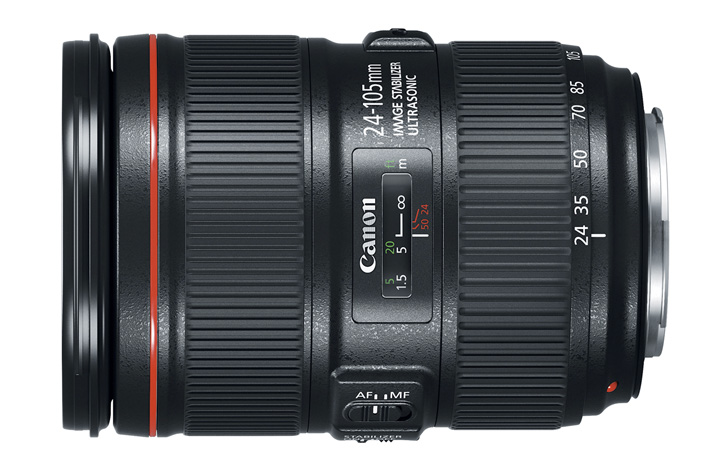
Enhanced water and dust resistance makes the camera ideal for travel photographers or photojournalists working in challenging terrain. Renowned for enabling people to tell the stories that need to be told, the EOS 5D series has captured many of the world’s most significant moments in history. Canon wants this camera to continue on the same path and to make the new camera a more versatile tool, two new lenses are introduced: the EF 24-105mm f/4L IS II USM and the EF 16-35mm f/2.8L III USM.
With a zoom range that became common with digital cameras, the EF 24-105mm f/4L IS II USM introduces something new when it comes to moving images: a new video design EDM provides quiet aperture adjustment during movie capture. A truly flexible and durable everyday lens, the EF 24-105mm f/4L IS II USM is a perfect tool for any photographer wanting to achieve high edge-to-edge sharpness over the entire zoom range. The 24-105mm focal length and f/4 aperture is ideal for a variety of scenes, subjects and lighting conditions, and the lens also offers improved 4-stop IS.
The second lens annouced is the EF 16-35mm f/2.8L III USM. Working in perfect harmony with high resolution sensors such as the one seen in the EOS 5D Mark IV, the high-performance lens provides exceptional image quality for professional and serious enthusiasts. The versatile focal length (16-35mm) will appeal to wedding photographers and photojournalists who need to work up close, whilst the fast, constant, f/2.8 maximum aperture makes it an obvious choice for those shooting in low light.
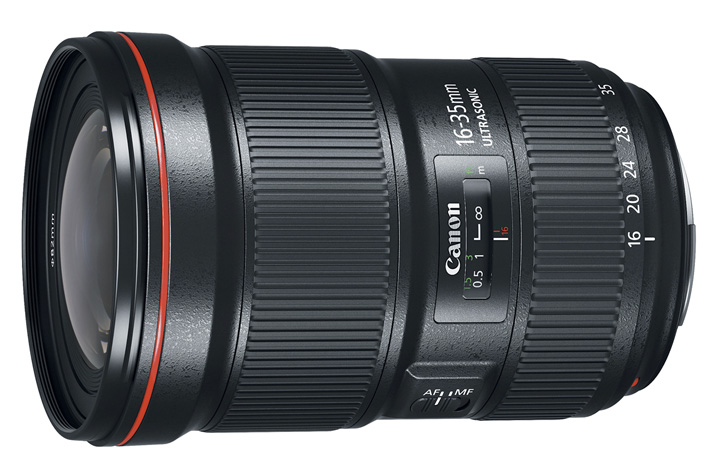
EOS 5D Mark IV Key Features:
- 30.4 megapixel CMOS sensor with high exposure latitude
- Engineered to perform with the innovative Dual Pixel CMOS AF and Dual Pixel RAW
- Step up to cinematic 4K with DCI 4K up to 30p
- Stay connected with Built-in Wi-Fi, NFC and GPS
EF 24-105mm f/4L IS II USM Key Features:
- Versatile 24-105mm zoom range
- Constant f/4 max aperture
- L-series weather-proof construction
- 4-stop Image Stabilizer
- Advanced optical construction
EF 16-35mm f/2.8L III USM Key Features:
- Versatile collection of wide-angle focal lengths
- Premium image quality
- Fast constant f/2.8 aperture
- Durable L-series construction
- Advanced autofocus
The Canon EOS 5D Mark IV DSLR is currently scheduled to be available in early September 2016 for an estimated retail price of $3,499.00 for the body only. It will also be sold as part of body-and-lens kits with the EF24-70mm f/4L lens ($4,399.00, scheduled to be available early September) and the EF24-105mm f/4L IS II USM lens ($4599.00, scheduled to be available late October).
For an exclusive, hands-on preview, the camera will be available at the customer support centers shown below, indicates Canon. Visitors can experience the camera firsthand while Canon technical experts demonstrate new product features, answer questions, and spotlight the benefits of Canon products and service.
- Canon Customer Care Center, Melville, NY – Monday, August 29, 11am-2pm
https://www.regonline.com/CLLLI16_August29 - Canon Experience Center, Costa Mesa, CA – Tuesday, August 30, 7pm-9pm
https://www.regonline.com/CEC16_August30 - Canon Professional Service & Support Center, Itasca, IL – Friday, September 2, 11am-2pm
https://www.regonline.com/ItascaSeptember2016

Filmtools
Filmmakers go-to destination for pre-production, production & post production equipment!
Shop Now